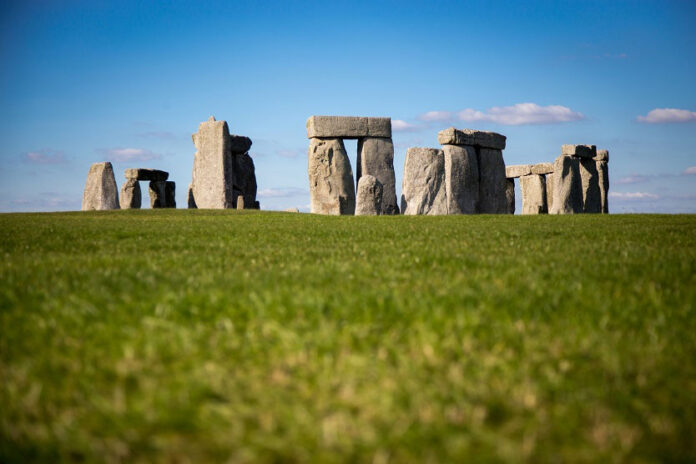The origin of sarsens, the larger stones that make the primary architecture of Stonehenge was an enduring mystery for several centuries. The geochemical analysis1 of the data by a team of archaeologists has now shown that these megaliths originated from West Woods, a site 25 km north of Stonehenge in Wiltshire.
One of the most famous British landmarks, Stonehenge, is estimated to have been constructed from 3000 BC to 2000 BC. The complex of Stonehenge is formed by two different types of stones: the larger sarsens, which are made of sedimentary rock, and the smaller bluestone, which are made of igneous rock.
The iconic upright sarsen stones, which form the main part of Stonehenge’s exterior, are approximately 6.5m tall and each stone weighs about 20 tonnes. How the ancient people managed to cut such megaliths and transported them to the site without access to modern day machinery is an enduring mystery. However, the source and origin of these megaliths is now clear as described below.
These enormous stones are generally thought to have originated from Marlborough Downs which is 30km from Stonehenge. Chemical analysis1 of the stones at Stonehenge determined the mineral composition of the stones, which was used to estimate the geographical region from where the sarsen stones came. Sarsen stones present at Stonehenge are now confirmed to have been transported from West Woods in Marlborough Downs but 2 of the 52 megaliths did not match the geochemical signatures of the rest of the stones so these 2 still have an unknown origin.
West Woods has evidence of much ancient activity. Stones were probably sourced by the creators of Stonehenge due to the high quality and large size stones found here.
It is believed that Stonehenge could have been an ancient burial site as human bone deposits were found there, possibly a site of ritualistic or religious significance for the creators of Stonehenge.
The significance of this site for its creators is also supported by the fact that the summer solstice sun rises over the heel stone, suggesting that positioning of stones was deliberate and not random, and that people of these culture had some knowledge of astronomy. However, due to lack of evidence of written language, Stonehenge remains a mysterious prehistoric site which has no known purpose despite clearly being significant enough for its creators such that they went through massive effort to mine and transport inconveniently large and heavy stones.
***
Reference:
- Nash David J., Ciborowski T. Jake R., Ullyott J. Stewart et al 2020. Origins of the sarsen megaliths at Stonehenge. Science Advances 29 Jul 2020: Vol. 6, no. 31, eabc0133. DOI: https://doi.org/10.1126/sciadv.abc0133
***






































